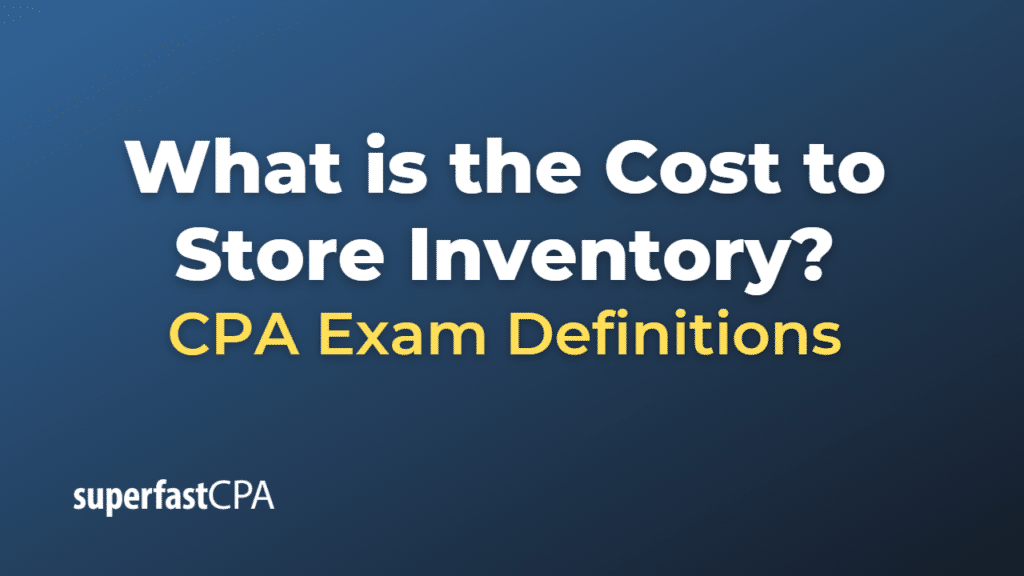Cost to Store Inventory
The cost to store inventory, often referred to as inventory carrying cost or holding cost, represents the total costs associated with storing unsold goods. These costs can include:
- Warehousing Costs: The physical space required to store inventory has a cost, whether it’s a warehouse, retail store, or distribution center. This includes rent or mortgage, utilities, insurance, security, and other facility costs.
- Inventory Service Costs: This includes costs associated with managing the inventory such as hardware and software for inventory management, salaries and benefits for staff managing the inventory, and costs associated with purchasing and receiving inventory.
- Inventory Risk Costs: These costs arise due to the risks associated with holding inventory. This includes obsolescence (products becoming outdated), shrinkage (losses due to theft, damage, or clerical errors), and depreciation. Also, the longer goods are stored, the greater the chance they may become obsolete or lose value for other reasons.
- Capital Costs: This is the opportunity cost of investing capital in inventory that could be used elsewhere. In other words, it’s the return a business could earn on the money if it was invested in something else instead of being tied up in inventory.
The total cost of storing inventory is significant and can have a substantial impact on a company’s bottom line. Therefore, effective inventory management is critical to minimize these costs and improve profitability. This involves balancing the costs of storing inventory with the costs of not having enough inventory to meet demand (known as stockouts), which can result in lost sales and dissatisfied customers.
Example of the Cost to Store Inventory
Let’s consider a hypothetical example. Suppose we have a business that sells electronics and has a warehouse to store its inventory. Here’s a breakdown of the annual costs to store its inventory:
- Warehousing Costs: The business pays $10,000 per month in rent for the warehouse, $2,000 per month for utilities, and $1,000 per month for insurance. That’s a total of $13,000 per month, or $156,000 per year.
- Inventory Service Costs: The business employs two full-time staff members to manage the inventory, with total salaries and benefits amounting to $70,000 per year. It also spends $10,000 per year on inventory management software.
- Inventory Risk Costs: Over the course of the year, the business loses $5,000 worth of inventory due to shrinkage, and another $10,000 worth becomes obsolete before it can be sold.
- Capital Costs: The business has $500,000 worth of capital invested in its inventory. If it could have invested that capital elsewhere in the business at a 5% annual return, the opportunity cost is $25,000.
Adding up these costs, the total annual cost to store inventory for this business is $156,000 (warehousing) + $70,000 (inventory service) + $15,000 (inventory risk) + $25,000 (capital cost) = $266,000.
This example illustrates how various factors contribute to the cost of storing inventory. By understanding these costs, businesses can make more informed decisions about inventory management to optimize their operations and profitability.













